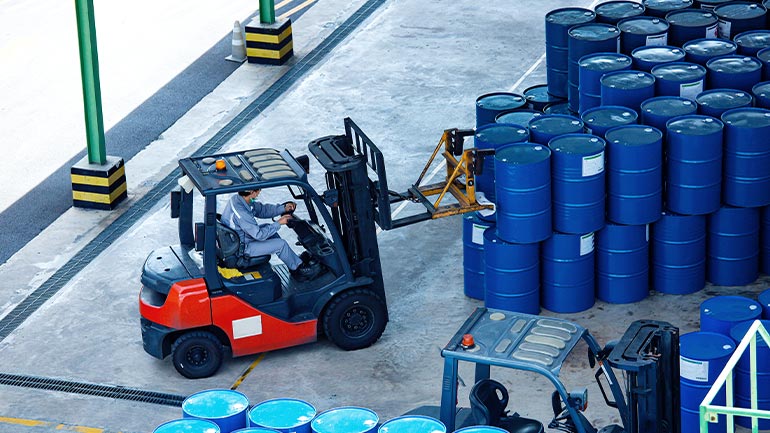Current Geopolitical Impacts on Oil Price
By: Bart Melek
Oct. 18, 2024 - 4 minutes 30 seconds
Overview
- Crude oil benchmarks have rallied sharply following some of the lowest rates in three years.
- The market is at risk of a major correction in the coming months without cuts in production.
- Chinese economic stimulus may boost demand but would still be short of pre-COVID numbers.
- An escalating Israel-Iran conflict might impact the energy infrastructure of other nations.
Crude Gets a Boost from Middle East Concerns and China Stimulus
Global crude oil benchmarks have sharply rallied following recent lows. WTI is currently trading at nearly US$75 per barrel (/b), with Brent hovering close to US$79/b — up sharply from the lows of US$65.75/b and US$69/b respectively back in early-September.
The key drivers of the recent rally had very little to do with any material improvement in the supply-demand fundamentals on the ground. Instead, the price lift was largely related to the possibility that China stimulus will boost future demand and a growing risk that Israel and Iran may clash militarily, which may disrupt oil flows from the region. There was also some support from the September OPEC+ producer decision to keep production cuts until December. Veiled threats that Saudi Arabia is willing to launch a price war to keep its market share if other 'cheaters' don’t abide by the group’s agreements was also accretive.
Fundamentals Weak, Cuts Needed to Prevent Rout
Notwithstanding concerns surrounding a wider Middle East war and OPEC+ producer plans to keep current production cuts until December, the crude oil market is at risk of a major correction in the coming months. The pending surplus starting in early-2025 stemming from weak global demand and robust supply growth is projected to swell inventories by some 155 million barrels in the first half of next year. This may well see WTI crude price drop to the US$50-60/b range in the months to come.
The markets need to see OPEC+ comply with production quotas and further delay the unwind of production cuts in order to prevent a sharp correction. While non-OPEC+ production is projected to jump by some 1.5 million barrels per day (b/d)or more, demand is growing by less than one million b/d. Inventory levels suggest that a reduction of 500k b/d from current levels should preserve a rough market balance and prevent crude from migrating into the estimated lower trading range.
OPEC Cheating Remains a Hinderance to Market
Based on recent cheating (most notably by Iraq), large OPEC overcapacity and the cartel's loss of market share, the required cuts to balance the market will be much harder to achieve than in the past. After all, in the face of aggressive non-OPEC capacity increase, the OPEC+ production suppression policy did not yield desired price levels (unofficial Saudi target of US$100/b) and resulted in a material loss of market share.
A Saudi policy abandoning a high price target would suggest increased production from the cartel, and, by definition, significantly lower prices. The goal of such a policy would be to stimulate demand and at the same time force marginal players out of the market, and to serve as a disincentive to grow non-OPEC capacity.
Weak China, a Big Problem for Oil Market
China has been the world’s largest annual gross crude oil importer since 2017, overtaking the U.S. in that regard. This landmark trend was driven by its rapidly growing need for energy to power its booming economic growth from the mid-1990s. When COVID-19 forced a shutdown of the economy at the end of 2019, China responded with a ‘Zero-COVID’ policy that shuttered virtually the entire economy. With that, the oil demand growth trajectory dropped dramatically.
Since then, China's economic recovery has been spotty with the economy growing at below 5 percent, the residential real estate market plunging and oil demand materially disappointing markets. While it has introduced some stimulative policies, they are small relative to China's RMB 130 trillion (US$18.53 trillion) nominal GDP.
OPEC Compliance and Further Cut Extensions Needed to Help Balance 2025
We judge that, in aggregate, Beijing's oil demand next year is expected to grow by only 0.3 million b/d. This compares to demand growth of 0.7 million b/d pre-COVID. Additional policy measures, which are likely to be announced at the Standing Committee of the National People's Congress later this month, may improve this estimate somewhat but will not be transformative for the market.
Full-Blown Middle East Conflict Could See US$100+ Crude
Oil prices would very likely surge if a full-blown war erupts in the Middle East. If Israel targets Tehran's oil infrastructure, Iran could retaliate against oil tankers navigating the Straits of Hormuz as well as pipelines and other energy infrastructure of nations "friendly" to Israel and the U.S.
Iran produced some 3.34 million b/d in September. If flows from Iran were to stop for a while, prices would no doubt surge. However, given that International Energy Agency estimated that OPEC's total spare capacity was some 5.7 million b/d at the end of August, it would not be the end of the world.
If Tehran were to then attack Gulf State energy infrastructure and tanker traffic through the Straits of Hormuz, the impact would be much more severe and long-lasting as those supplies cannot be replaced. Saudi Arabia, UAE, Kuwait and Iraq alone produce some 19.2 million b/d of crude. As such, $100+ crude for a prolonged period would be very much in the cards.
Subscribing clients can read the full report, Mid-East Conflict and OPEC+ Restraint Hopes Preventing a Sharp Oil Correction, via the TD One Portal






